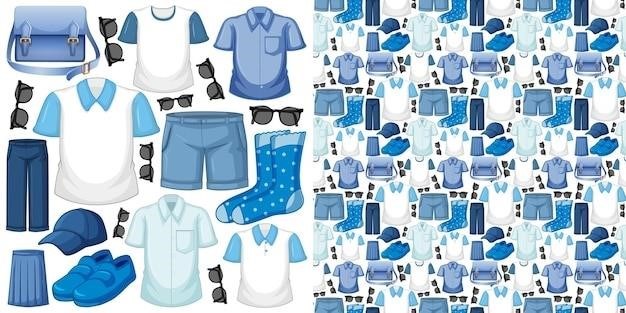What are PDF Clothing Patterns?
PDF clothing patterns are digital versions of traditional paper patterns, offering a convenient and eco-friendly alternative for sewers. They are files that can be downloaded, printed, and assembled at home, eliminating the need for physical pattern pieces. These patterns typically include detailed instructions, size charts, and cutting layouts, making them suitable for both beginners and experienced sewers.
A Digital Revolution in Sewing
PDF clothing patterns have ushered in a digital revolution in the world of sewing, offering a plethora of benefits over traditional paper patterns. They have transformed the way sewers access and use patterns, making the process more efficient, accessible, and environmentally conscious. The advent of PDF patterns has revolutionized the sewing community, providing a convenient and instant way to obtain sewing patterns. No longer bound by the limitations of physical stores or shipping delays, sewers can now access a vast array of patterns from the comfort of their own homes, instantly downloading and printing them at their convenience. This accessibility has opened up a world of possibilities for sewers, allowing them to explore a wider range of styles and designers, while also eliminating the need for bulky pattern books and the associated storage space.
Benefits of PDF Patterns
PDF clothing patterns offer a multitude of advantages over traditional paper patterns, making them a popular choice for sewers of all skill levels. One of the most significant benefits is their instant accessibility. Unlike paper patterns, which require shipping and often come with a hefty price tag, PDF patterns can be downloaded and printed immediately. This eliminates the need for waiting and allows sewers to start their projects right away. Another major advantage is their versatility. PDF patterns are often available in a wider range of sizes than paper patterns, accommodating diverse body types and tailoring needs. They also offer the option to print only the sizes you need, reducing paper waste and storage space. Furthermore, PDF patterns are more environmentally friendly, as they eliminate the need for physical pattern pieces and packaging, contributing to a greener sewing experience.
Where to Find PDF Patterns
The world of PDF patterns is vast and diverse, offering a plethora of options for sewers of all levels and interests.
Online Pattern Shops
The digital age has revolutionized the way we access sewing patterns, with a wide array of online shops dedicated to offering PDF patterns. These shops often showcase a diverse selection of designs from independent designers and established pattern companies, allowing sewers to explore a vast world of possibilities. From independent pattern designers to established pattern companies like Simplicity, Vogue, and BurdaStyle, these shops offer a wide range of designs catering to various styles, sizes, and skill levels. Many online pattern shops specialize in specific clothing categories, such as dresses, tops, pants, or children’s wear, making it easier for sewers to find patterns that align with their specific sewing interests.
One of the key advantages of online pattern shops is the convenience they offer. You can browse through a wide array of designs from the comfort of your home, compare prices and reviews, and purchase patterns with just a few clicks. Additionally, these shops often offer instant downloads, allowing you to start sewing right away without having to wait for physical patterns to arrive in the mail.
Free Pattern Resources
For sewers on a budget or those looking to expand their pattern library without spending a fortune, free PDF patterns offer a valuable resource. Numerous websites and blogs offer free sewing patterns for various projects, from simple tops and skirts to more intricate garments. These resources provide a great opportunity for beginners to practice their sewing skills and gain confidence before venturing into more complex patterns.
Some online fabric retailers, such as Mood Fabrics and Sewdirect, offer a selection of free PDF patterns to encourage customers to try their fabrics and support the sewing community. Additionally, independent pattern designers often release free patterns as promotional offers or to showcase their skills. These free patterns can be found on websites like Pinterest, where users share their favorite sewing resources and create boards dedicated to free patterns.
While free patterns offer a budget-friendly option, it’s essential to consider the quality and accuracy of the instructions. Some free patterns may lack detailed instructions or have limited size ranges, while others may be well-designed and offer a satisfying sewing experience.

Types of PDF Patterns
PDF patterns encompass a wide range of styles, sizes, and skill levels, catering to diverse sewing interests.
Clothing Categories
The world of PDF patterns offers a vast array of clothing categories to explore, catering to every sewing need and desire. From everyday essentials to special occasion garments, the options are limitless. You can find patterns for dresses, tops, skirts, pants, shorts, jackets, coats, and even swimwear. For the little ones, there are adorable patterns for children’s clothing, from rompers and dresses to trousers and shirts.
Beyond basic apparel, PDF patterns delve into the realm of accessories, offering designs for bags, hats, scarves, and more. This wide range of categories allows sewers to create a complete wardrobe, from head to toe, using digital patterns.
Skill Levels
PDF patterns are designed to accommodate sewers of all skill levels, from beginners taking their first steps into the world of sewing to experienced crafters seeking new challenges. Many pattern designers offer clear and detailed instructions, often with accompanying diagrams and illustrations, making them easy to follow, even for those new to sewing.
For those venturing into more complex projects, PDF patterns often include variations and options, allowing sewers to customize designs and tailor them to their skill level. Additionally, many online communities and forums dedicated to sewing provide support and guidance, connecting sewers with experienced individuals who can offer advice and troubleshooting tips.
Using PDF Patterns
Using PDF patterns involves printing, assembling, and then sewing the pattern pieces to create your desired garment. The process is straightforward, and many patterns include detailed instructions and diagrams to guide you through each step.
Printing and Assembling
Printing PDF patterns requires a printer and a sufficient amount of paper; Many patterns are designed to be printed on standard letter or A4 paper, but some may require larger paper sizes. It’s important to check the pattern’s instructions for specific printing requirements. You may need to tile the pattern across multiple pages, ensuring that the markings align correctly. Some patterns offer projector files, which can be used to project the pattern onto a larger surface for cutting. After printing, the pattern pieces need to be assembled. This involves carefully cutting out each piece and taping them together along the designated lines. The instructions will provide specific details on how to assemble the pattern, ensuring accurate measurements and alignment.
Sewing with PDF Patterns
Sewing with PDF patterns follows the same general principles as sewing with traditional paper patterns. The instructions will guide you through each step of the process, from cutting the fabric to finishing the garment. It’s essential to pay attention to the seam allowances, markings, and grain lines indicated on the pattern pieces. PDF patterns often include digital tutorials or videos that provide visual demonstrations of techniques and tips for sewing specific garment elements. These resources can be especially helpful for beginners or those learning new sewing skills. Remember to use sharp fabric shears for precise cutting and to carefully press seams as you go. The instructions will also outline the specific tools and materials needed for the project, such as needles, thread, and interfacing.

Tips for Sewing with PDF Patterns
Sewing with PDF patterns can be a rewarding experience, but it’s important to follow a few tips to ensure success. These include choosing the right fabric for your project, adjusting the pattern for fit, and troubleshooting any common issues that may arise.
Choosing the Right Fabric
The fabric you choose will significantly impact the final look and feel of your garment, so it’s crucial to select the right one for your PDF pattern. Consider the project’s intended use, the pattern’s suggested fabric types, and your own personal preferences. For example, a lightweight cotton fabric is ideal for a summer dress, while a heavier wool fabric is better suited for a winter coat.
Pay attention to the fabric’s drape, weight, and texture, as these factors can affect the garment’s fit and overall appearance. If the pattern calls for a specific fabric type, it’s generally best to stick to that recommendation, as the pattern designer has likely chosen it for a reason. However, feel free to experiment with different fabrics, especially if you’re experienced with sewing and are looking to add your own creative touch to the project.
Before cutting into your fabric, it’s always a good idea to pre-wash and iron it. This helps prevent shrinkage and ensures that the fabric is smooth and easy to work with. Also, remember to take into account the fabric’s directionality, such as the nap or grain, when cutting and sewing. By carefully considering these factors, you can create a beautiful and well-made garment that you’ll be proud to wear.
Adjusting for Fit
While PDF patterns often offer a wide range of sizes, achieving a perfect fit may require some adjustments. Understanding your body shape and measurements is essential for tailoring the pattern to your unique form. Measure yourself carefully and compare your measurements to the pattern’s size chart. If your measurements fall between sizes, choose the larger size and adjust accordingly.
Common adjustments include altering the bust, waist, or hip measurements, adjusting the length of the garment, or adding or removing fullness in specific areas. You can make these adjustments by adding or subtracting fabric at the seams or by altering the pattern pieces before cutting. There are numerous online resources and sewing books that provide detailed instructions on making adjustments to patterns.
Don’t be afraid to experiment with adjustments, as finding the perfect fit is a process that often involves trial and error. It’s always a good idea to make a muslin, a test garment made from inexpensive fabric, to check the fit before cutting into your final fabric. By taking the time to adjust the pattern to your body, you can ensure that your finished garment is comfortable, flattering, and perfectly tailored to your figure.
Troubleshooting Common Issues
Sewing with PDF patterns can sometimes present unique challenges. One common issue is misaligned printing, which can lead to distorted pattern pieces. To prevent this, it’s crucial to print your pattern with the correct settings, including scaling and page orientation. Always double-check that your printer is set to print at 100% and that the “fit to page” option is disabled.
Another potential issue is difficulty in aligning the pattern pieces during assembly. This can be resolved by using a rotary cutter and a cutting mat for precise cutting, as well as a clear ruler for accurate alignment. If you’re struggling to align the pattern pieces, consider using pattern weights to hold them in place while you cut.
Finally, if you’re encountering problems with the instructions, don’t hesitate to seek help from online forums, sewing communities, or the pattern designer themselves. Most pattern designers are happy to provide support and answer questions, ensuring a successful sewing experience.



